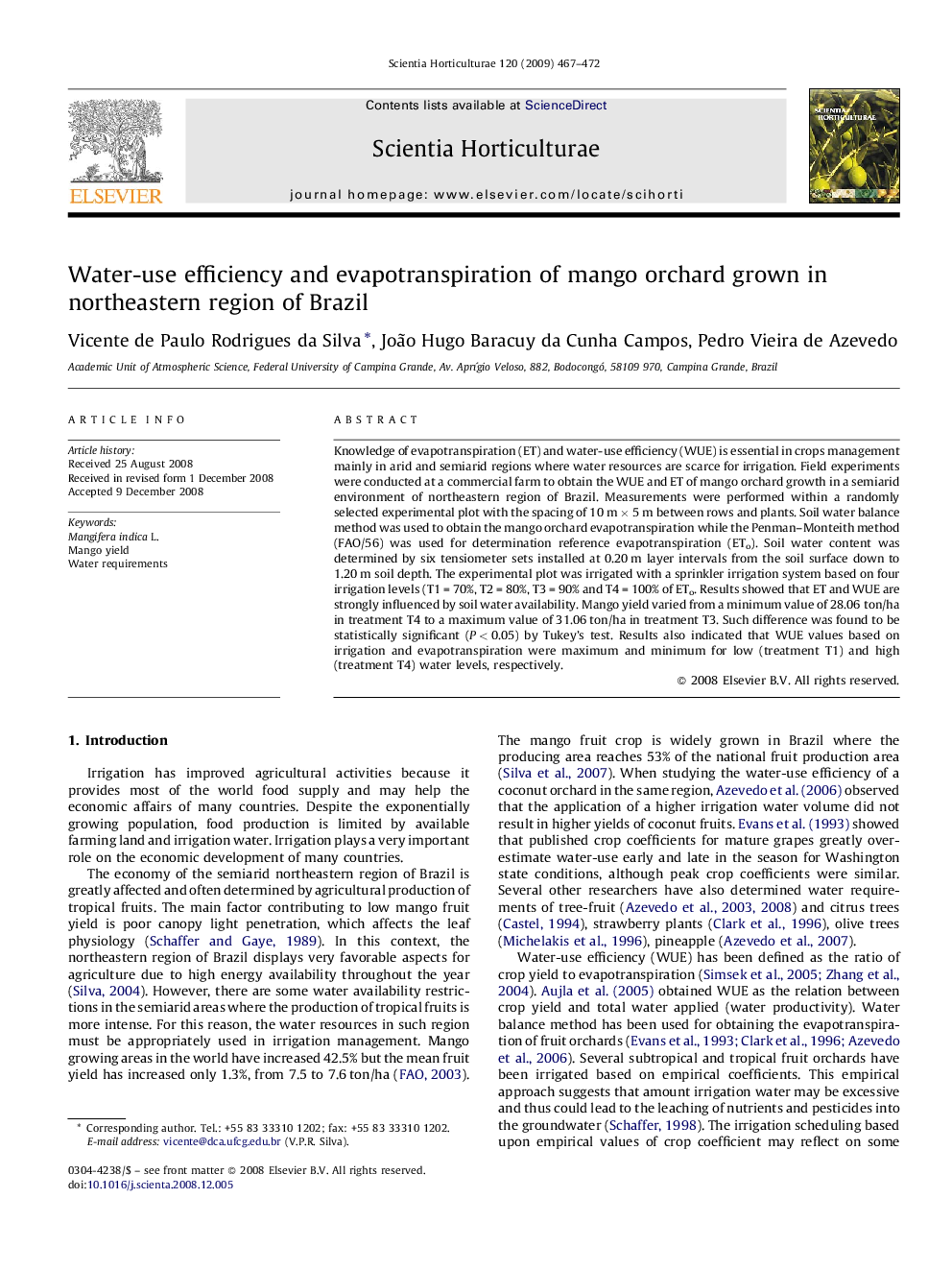| Article ID | Journal | Published Year | Pages | File Type |
|---|---|---|---|---|
| 4568466 | Scientia Horticulturae | 2009 | 6 Pages |
Knowledge of evapotranspiration (ET) and water-use efficiency (WUE) is essential in crops management mainly in arid and semiarid regions where water resources are scarce for irrigation. Field experiments were conducted at a commercial farm to obtain the WUE and ET of mango orchard growth in a semiarid environment of northeastern region of Brazil. Measurements were performed within a randomly selected experimental plot with the spacing of 10 m × 5 m between rows and plants. Soil water balance method was used to obtain the mango orchard evapotranspiration while the Penman–Monteith method (FAO/56) was used for determination reference evapotranspiration (ETo). Soil water content was determined by six tensiometer sets installed at 0.20 m layer intervals from the soil surface down to 1.20 m soil depth. The experimental plot was irrigated with a sprinkler irrigation system based on four irrigation levels (T1 = 70%, T2 = 80%, T3 = 90% and T4 = 100% of ETo. Results showed that ET and WUE are strongly influenced by soil water availability. Mango yield varied from a minimum value of 28.06 ton/ha in treatment T4 to a maximum value of 31.06 ton/ha in treatment T3. Such difference was found to be statistically significant (P < 0.05) by Tukey's test. Results also indicated that WUE values based on irrigation and evapotranspiration were maximum and minimum for low (treatment T1) and high (treatment T4) water levels, respectively.
